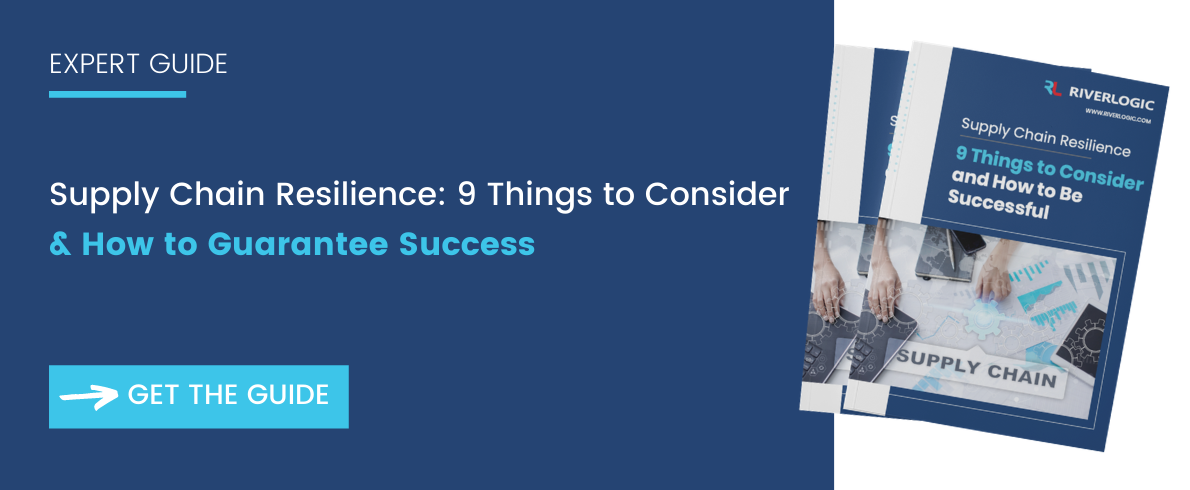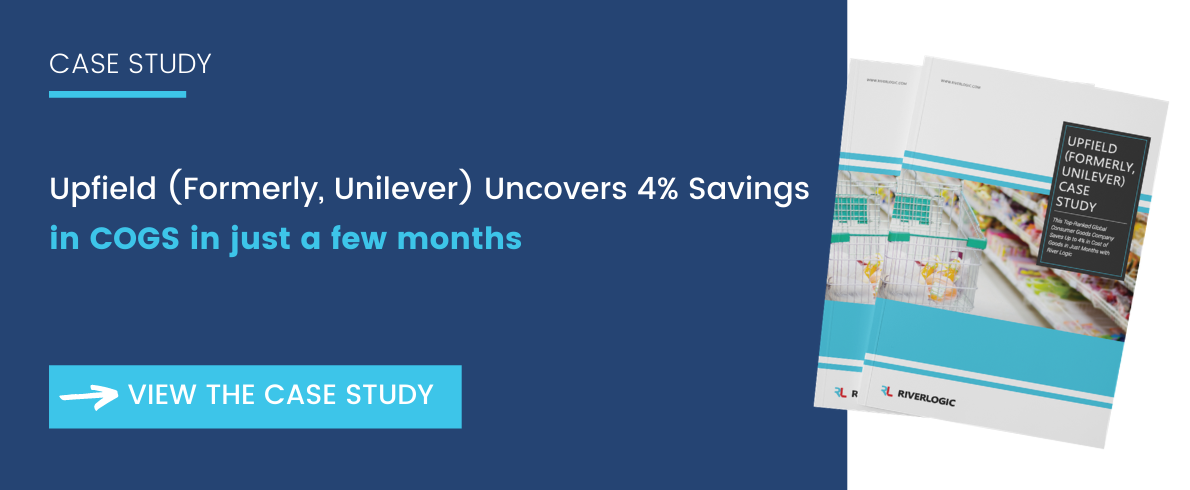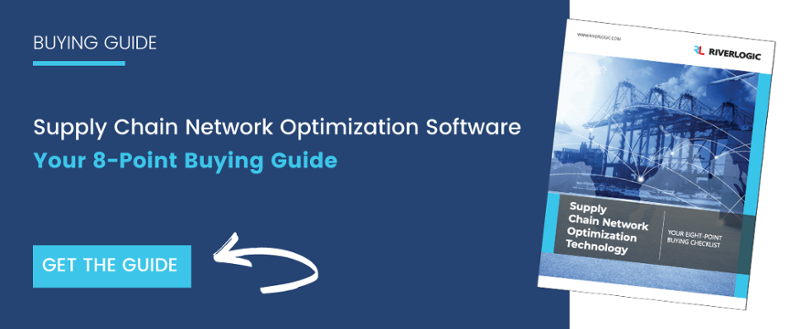It’s against this background that the market has placed renewed emphasis on supply chain cost optimization as an effective mechanism for increasing profitability and corporate health. It’s not just a simple case of reducing supply chain costs; the events of 2020 have aptly demonstrated that the lowest cost supply chains aren’t particularly resilient. A better approach is to adopt supply chain cost optimization processes to determine the optimal combination of cost, resilience and quality that best contributes to corporate growth.
What Is Supply Chain Cost Optimization?
Supply chain cost optimization refers to efforts to manage supply chain costs effectively so as to achieve the best possible return while ensuring reliable supply. The scope of supply chain cost optimization includes:
- Raw material cost quality and supply
- Transportation methods, routes and costs
- Procurement
- Inventory policies
- Distribution costs
- Forecasting and demand planning
- Customer service levels
This is a formidable list and illustrates a broad definition of what constitutes the supply chain. In essence, almost everything from sourcing the raw material to getting the finished product into the customer’s hands could be said to be part of the supply chain and a target for supply chain cost optimization strategies.
What Does Gartner Say About Supply Chain Cost Optimization?
In its 2020 Hype Cycle for Supply Chain Strategy, Gartner places supply chain cost optimization as falling into the trough along the hype cycle curve. What this means is that it’s past the peak of inflated expectations and is slowly but surely moving toward the scope of enlightenment where early adopters benefit from this new technology.
Gartner goes on to state that supply chain cost optimization refers to a process for managing and controlling supply chain costs. This can be achieved through determining the total cost of ownership as opposed to the lowest supply chain costs. Through this process, suppliers can quantify costs and evaluate service tradeoffs related to the complexity of supplying goods to customers.
Characteristics of such a strategy include:
- Making choices to minimize waste
- Rigorous cost analysis
- Determining how to fulfill demand
- Balancing supply chain costs against future growth opportunities
- Appropriate network optimization and design
- Leveraging network models
Further, successful supply chain cost optimization requires the use advanced supply chain capabilities such as S&OP, strategic sourcing and integrated business planning enabled through advanced supply chain analytics.
Why Is It So Important?
In a perfect world, an ideal supply chain would source exactly the right amount of raw material shipped optimally to an organization’s processing facilities. Once processed, finished goods would be sent to appropriate distribution centers for prompt delivery to customers.
If only this could happen in the real world!
The reality is that in most instances nothing goes quite according to plan:
- Deliveries are late
- Manufacturing has holdups
- Sales forecasts are inaccurate
- Costs exceed forecasts
- Inbound and outbound stocks exceed expectations
We could go on and on, but you get the picture. Fortunately, as much often goes right as goes wrong. But when the dice fall badly, and everything goes wrong, many companies fail, as has been experienced during the economic disruption arising from the COVID-19 pandemic.
The problem is that supply chains are notoriously complex, and it’s difficult to obtain a complete picture of what is going on, except after the event. For example, according to McKinsey and Company, nearly half of all supply chain costs lie hidden inside poorly managed logistics and distribution centers. What’s needed are tools and information systems that enable you to determine, in close to real time, what is going on and what are the right decisions you need to make to improve and master supply chain cost optimization.
How to Master Supply Chain Cost Optimization
The first step on the road to mastering supply chain cost optimization is to get your analytics right. Depending on where you’re starting from, it’s essential that you begin to measure and evaluate historic, current and future performance through leveraging supply chain analytics.
Each form of analytics has its place:
- Descriptive analytics tells you what happened
- Diagnostic analytics informs the reasons why
- Predictive analytics allows you to determine what may or will happen in the future
- Prescriptive analytics offers the ability to determine the optimal ways to respond to future trends.
The Role of Advanced Analytics in Supply Chain Cost Optimization
Although it’s essential to have access to historic descriptive and diagnostic analytics, the fact they report past performance means that unless nothing has changed in the interim, they have limited use for determining what to do next.
What’s really needed is an ability to predict what will happen in the future, allowing you to adjust your supply chain cost optimization strategies appropriately. For example, predictive analytics can help determine factors such as:
- Changes in overall product demand
- Product life cycle stages
- Demand forecasting
- Inventory management
- Distribution requirements
While these factors can alert you to changes needed, they are silent regarding what you should do. This is where prescriptive analytics steps in with its ability to offer data-driven answers as to which of several options or scenarios are best in terms of optimizing supply chain costs in line with corporate objectives. This is the fundamental difference between predictive and prescriptive analytics, but you need both.
Taking It Further with a Supply Chain Digital Twin
Predictive and prescriptive analytics leverage solutions using a mathematical model of your supply chain. These models closely replicate how your organization operates in the real world working from exactly the same data. It was this similarity that led to the concept of a supply chain digital twin, an almost complete and exact digital representation of the real supply chain.
Taking this logic to the next step, it’s possible to populate digital twins with data in real time, allowing unparalleled opportunities to monitor and observe how your supply chain functions. You then have the ability to evaluate various supply chain cost optimization scenarios on the digital twin to support decision making in real time. Additionally, the digital twin could be expanded to represent the value chain end-to-end, allowing you to run scenarios that more closely represent the complete business.
With a digital twin and prescriptive analytics, you can perform scenario analysis and find answers to questions such as how to:
- Reduce supply chain cost
- Improve supplier performance
- Understand the tradeoff between cost and customer service
- Determine the best supply chain cost optimization strategy
Avoiding Failure with Supply Chain Cost Optimization Based on Prescriptive Analytics
It’s an unfortunate fact that recent events have only served to increase supply chain complexity; events such as:
- The COVID-19 pandemic
- Trade disputes between the U.S. and its major trading partners
- Political unrest and turmoil in many areas of the world
- Natural and man-made disasters
While it may not be possible to predict the outcomes of many of these events, it is possible to factor them into your scenario planning to create a robust yet cost-effective supply chain cost optimization strategy.
River Logic for Cost Optimization
River Logic takes a unique approach to helping organizations optimize costs across the enterprise. With a digital twin model that stretches beyond the supply chain — to incorporate financial objectives, constraints, and variables — it’s able to help companies optimize the end-to-end value chain, in addition to parts within the value chain. Out-of-the-box solutions allows companies to incorporate and utilize managerial and financial accounting for scenario analysis and optimizations. Thus, these companies are able to more realistically optimize decisions and balance complex trade-off decisions that impact cost, resilience, revenue, service levels, and more.









